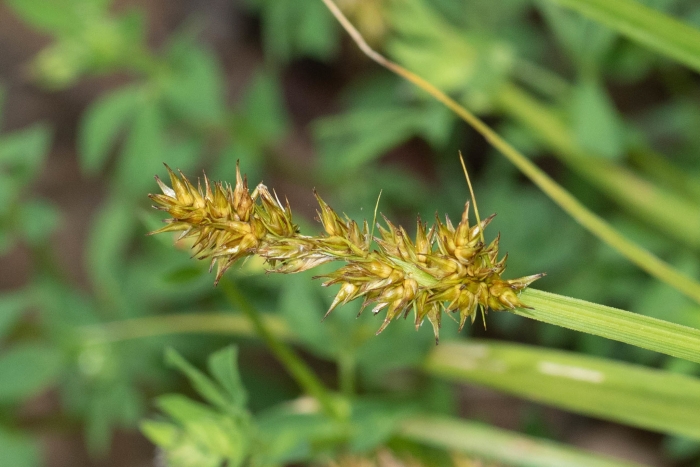Awl-Fruited Sedge
(Carex stipata)
Awl-Fruited Sedge (Carex stipata)
/
/

David McCorquodale
CC BY 4.0
Image By:
David McCorquodale
Recorded By:
Copyright:
CC BY 4.0
Copyright Notice:
Photo by: David McCorquodale | License Type: CC BY 4.0 | License URL: http://creativecommons.org/licenses/by/4.0/ | Rights Holder: David McCorquodale | Publisher: iNaturalist | Date Created: 2021-07-01T17:22:35-07:00 |


















































Estimated Native Range
Summary
Carex stipata, commonly known as Awl-fruited Sedge or Prickly Sedge, is a perennial herbaceous plant native to a variety of wetland habitats including marshes, swamps, wet meadows, and along streams and rivers in Canada, the United States, Korea, and Japan. It typically grows to a height of 2-3 feet (0.6-0.9 meters) and features grass-like leaves and distinctive seed heads that are prickly in appearance. The plant blooms from late spring to early summer, producing greenish-brown flowers that are not particularly showy but are interesting in their unique texture.
Awl-fruited Sedge is valued for its ability to thrive in wet conditions and is often used in rain gardens, wetland restoration projects, and as a naturalizing plant in moist garden areas. It is also beneficial for erosion control due to its dense root system. In cultivation, it requires high amounts of water and can tolerate a range of light conditions from full sun to full shade. It prefers soils with slow or standing drainage. While it is not known for major diseases or pests, it can become aggressive and spread rapidly, potentially becoming invasive outside its native range. Gardeners should be cautious and consult local regulations before planting Carex stipata in non-native areas.CC BY-SA 4.0
Awl-fruited Sedge is valued for its ability to thrive in wet conditions and is often used in rain gardens, wetland restoration projects, and as a naturalizing plant in moist garden areas. It is also beneficial for erosion control due to its dense root system. In cultivation, it requires high amounts of water and can tolerate a range of light conditions from full sun to full shade. It prefers soils with slow or standing drainage. While it is not known for major diseases or pests, it can become aggressive and spread rapidly, potentially becoming invasive outside its native range. Gardeners should be cautious and consult local regulations before planting Carex stipata in non-native areas.CC BY-SA 4.0
Plant Description
- Plant Type: Grass
- Height: 2-3 feet
- Width: 6-8 feet
- Growth Rate: Slow
- Flower Color: N/A
- Flowering Season: Spring
- Leaf Retention: Deciduous
Growth Requirements
- Sun: Full Sun, Part Shade, Full Shade
- Water: High
- Drainage: Slow, Standing
Common Uses
Bird Garden, Deer Resistant, Low Maintenance, Rabbit Resistant, Street Planting, Water Garden
Natural Habitat
Native to marshes, swamps, wet meadows, and stream banks
Other Names
Common Names: Owlfruit Sedge , Swamp Sedge , Sawbeak Sedge , Stalk-Grain Sedge , Awl-Fruited Sedge , Common Fox Sedge , Prickly Sedge , Saw-Beak Sedge , Stipitate Sedge , Carex Spongieux
Scientific Names: Carex stipata , Loncoperis stipata , Vignea stipata
GBIF Accepted Name: Carex stipata Muhl. ex Willd.